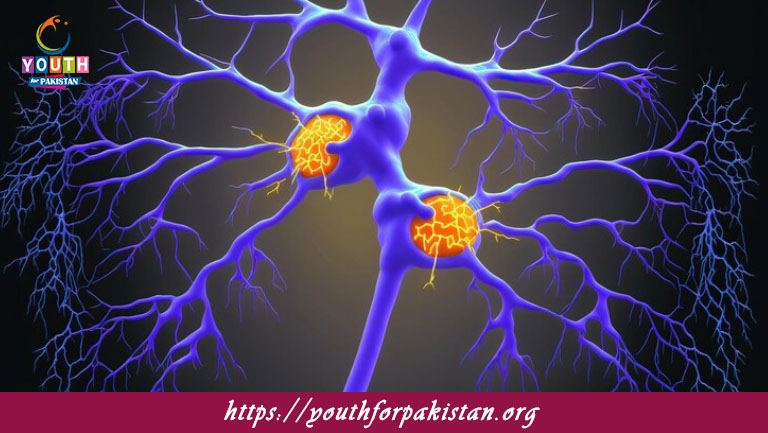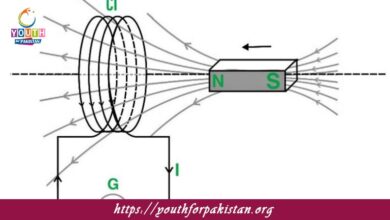Steps Involved In Nervous Coordination MDCAT MCQs

Welcome to the Steps Involved In Nervous Coordination MDCAT MCQs with Answers. In this post, we have shared Steps Involved In Nervous Coordination Multiple Choice Questions and Answers for PMC MDCAT 2024. Each question in MDCAT Biology offers a chance to enhance your knowledge regarding Steps Involved In Nervous Coordination MCQs in this MDCAT Online Test.
The first step in nervous coordination involves:
a) Sensory input
b) Motor output
c) Integration
d) Reflex action
Sensory receptors are responsible for:
a) Integrating sensory information
b) Generating action potentials
c) Detecting stimuli from the environment
d) Sending signals to muscles
The process by which the brain interprets sensory information is called:
a) Sensory input
b) Integration
c) Motor output
d) Reflex action
Motor output involves:
a) Receiving sensory information
b) Sending signals to muscles or glands
c) Processing information in the central nervous system
d) Detecting environmental stimuli
The pathway from a sensory receptor to the central nervous system is known as:
a) A motor pathway
b) A reflex arc
c) A sensory pathway
d) An integration pathway
In a reflex arc, the component that processes the sensory input is the:
a) Receptor
b) Effector
c) Sensory neuron
d) Interneuron
Which part of the nervous system is responsible for processing and integrating information?
a) Peripheral nervous system
b) Autonomic nervous system
c) Central nervous system
d) Somatic nervous system
The action potential travels along which part of the neuron to reach the axon terminal?
a) Dendrite
b) Soma
c) Axon
d) Myelin sheath
Neurotransmitters are released from which part of the neuron?
a) Dendrite
b) Soma
c) Axon terminal
d) Axon hillock
The synaptic cleft is the:
a) Space between the presynaptic and postsynaptic neurons
b) Part of the axon
c) Receptor site on the postsynaptic neuron
d) Storage site for neurotransmitters
After neurotransmitters are released into the synaptic cleft, they bind to:
a) Presynaptic receptors
b) Postsynaptic receptors
c) Axon hillock
d) Dendritic spines
The depolarization phase of an action potential involves:
a) Opening of potassium channels
b) Closing of sodium channels
c) Opening of sodium channels
d) Decrease in membrane potential
The repolarization phase of an action potential involves:
a) Opening of sodium channels
b) Closing of potassium channels
c) Opening of potassium channels
d) Influx of calcium ions
The role of calcium ions in neurotransmitter release is to:
a) Trigger the opening of sodium channels
b) Stimulate the release of neurotransmitters from vesicles
c) Inhibit neurotransmitter release
d) Activate postsynaptic receptors
Neurotransmitter action on the postsynaptic neuron is terminated by:
a) Action potential propagation
b) Reuptake or degradation
c) Synaptic cleft widening
d) Increased calcium concentration
In the reflex arc, which component directly elicits a response?
a) Sensory neuron
b) Interneuron
c) Motor neuron
d) Receptor
The process of neurotransmitter reuptake involves:
a) Uptake of neurotransmitters by the postsynaptic neuron
b) Uptake of neurotransmitters by the presynaptic neuron
c) Degradation of neurotransmitters by enzymes
d) Diffusion of neurotransmitters out of the synaptic cleft
The central nervous system integrates sensory input and generates:
a) Reflexes
b) Motor commands
c) Neurotransmitters
d) Hormones
The process of synaptic transmission involves:
a) Neurotransmitter synthesis
b) Action potential propagation along the axon
c) Release of neurotransmitters into the synaptic cleft
d) Reuptake of neurotransmitters into vesicles
Which of the following occurs during the refractory period of an action potential?
a) Sodium channels are open
b) Potassium channels are open
c) Calcium ions enter the axon
d) The membrane is at resting potential
The all-or-nothing principle of action potentials means:
a) Action potentials vary in size
b) Action potentials are either fully generated or not at all
c) Action potentials can be partially generated
d) Action potentials increase in amplitude with stronger stimuli
The term “saltatory conduction” refers to:
a) Continuous propagation of action potentials along the axon
b) Jumping of action potentials from one node of Ranvier to the next
c) Decrease in action potential speed
d) Spread of action potentials across the synaptic cleft
The presynaptic neuron is involved in:
a) Receiving neurotransmitters
b) Generating action potentials
c) Releasing neurotransmitters
d) Integrating sensory information
An action potential reaches the axon terminal and causes:
a) Increased potassium influx
b) Decreased calcium influx
c) Increased calcium influx
d) Decreased sodium influx
The role of dendrites is to:
a) Conduct electrical impulses away from the cell body
b) Release neurotransmitters
c) Receive incoming signals from other neurons
d) Integrate sensory information
The electrical impulse in a neuron is propagated by:
a) Continuous conduction along the entire axon
b) Jumping between nodes of Ranvier
c) Release of neurotransmitters
d) Diffusion of ions across the synaptic cleft
Neurotransmitters bind to receptors on the:
a) Axon terminal
b) Presynaptic neuron
c) Postsynaptic neuron
d) Dendrite
The process of generating an action potential begins with:
a) Hyperpolarization
b) Depolarization
c) Reuptake of neurotransmitters
d) Repolarization
The action potential travels along the axon by:
a) Passive conduction
b) Active transport
c) Saltatory conduction
d) Continuous conduction
In a reflex arc, the component that detects a stimulus is the:
a) Effector
b) Interneuron
c) Receptor
d) Sensory neuron
The synaptic vesicles in the axon terminal contain:
a) Calcium ions
b) Neurotransmitters
c) Potassium ions
d) Sodium ions
The neurotransmitter acetylcholine is involved in:
a) Excitatory and inhibitory signaling
b) Only excitatory signaling
c) Only inhibitory signaling
d) Neurotransmitter reuptake
The binding of neurotransmitters to postsynaptic receptors leads to:
a) Depolarization of the presynaptic neuron
b) Opening of voltage-gated potassium channels
c) Generation of a postsynaptic potential
d) Closure of ion channels in the presynaptic neuron
The action of neurotransmitters on postsynaptic neurons is terminated by:
a) Diffusion away from the synapse
b) Increased calcium influx
c) Direct degradation by enzymes
d) Reuptake into vesicles
The role of the myelin sheath is to:
a) Facilitate faster transmission of action potentials
b) Protect the neuron from external damage
c) Store neurotransmitters
d) Integrate sensory information
During the refractory period, the neuron:
a) Is more likely to generate a new action potential
b) Cannot generate a new action potential
c) Releases more neurotransmitters
d) Receives more sensory input
Which structure is responsible for the release of neurotransmitters into the synaptic cleft?
a) Dendrite
b) Axon terminal
c) Soma
d) Myelin sheath
The synaptic cleft is the space between:
a) The soma and the axon
b) The dendrite and the axon
c) The presynaptic neuron and the postsynaptic neuron
d) The axon and the myelin sheath
Neurotransmitter receptors are located on the:
a) Axon terminal
b) Myelin sheath
c) Postsynaptic membrane
d) Presynaptic membrane
The propagation of an action potential along the axon involves:
a) Decrease in membrane potential
b) Sequential opening and closing of ion channels
c) Reuptake of neurotransmitters
d) Diffusion of neurotransmitters across the synaptic cleft
The neurotransmitter dopamine is primarily involved in:
a) Memory formation
b) Mood and reward
c) Pain perception
d) Muscle contraction
In the nervous system, integration occurs primarily in the:
a) Peripheral nervous system
b) Motor neurons
c) Sensory neurons
d) Central nervous system
The effector in a reflex arc is typically:
a) A sensory receptor
b) A muscle or gland
c) An interneuron
d) A motor neuron
Action potentials are generated when the membrane potential reaches:
a) Resting potential
b) Threshold potential
c) Refractory potential
d) Hyperpolarization potential
The neurotransmitter serotonin is associated with:
a) Motor control
b) Sleep and mood regulation
c) Sensory processing
d) Reflex actions
During an action potential, the influx of which ion triggers the release of neurotransmitters?
a) Sodium
b) Potassium
c) Calcium
d) Chloride
The process by which neurotransmitters are removed from the synaptic cleft is known as:
a) Synaptic transmission
b) Neurotransmitter reuptake
c) Action potential propagation
d) Vesicular release
If you are interested to enhance your knowledge regarding Physics, Chemistry, Computer, and Biology please click on the link of each category, you will be redirected to dedicated website for each category.





